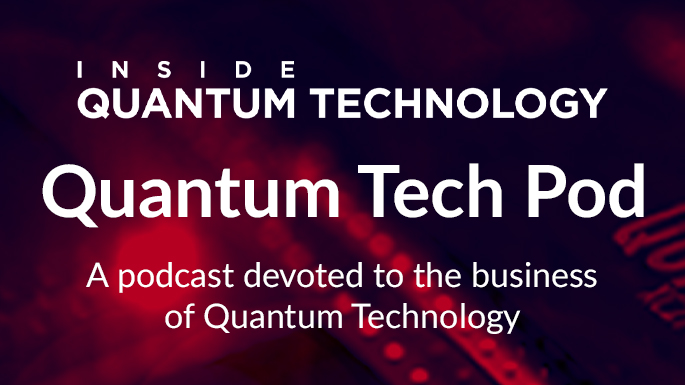Machine Learning and Deep Learning in the Quantum Era 2024: A Market Forecast and Technology Assessment
Machine learning (ML) is one of the most mature segments of the AI market – it dates to the 1950s. ML teaches machines to perform specific tasks and provide accurate results by identifying patterns. The advent of quantum computers has led to speculations on how the power of quantum computing can be applied to ML. A consensus is building that Quantum Machine Learning (QML) can improve classical ML in terms of faster run times, increased learning efficiencies and boosted learning capacity. QML exhibits several emerging trends:
- Using quantum computers to solve traditional ML problems.
- Developing improved ML algorithms better suited to QML.
- Investigating new ways of delivering QML, especially over a cloud.
- Using classical ML to optimize quantum hardware operations, control systems, and user interfaces.
In this report, IQT Research identifies QML opportunities and applications already beginning to appear and those that we believe will emerge in the future. We also discuss how QML technology will evolve and include ten-year forecasts of QML revenues, along with profiles of 25 profiles of leading firms and research institutes active in the field. The report also analyzes the factors retarding the growth of QML such as the cost and immaturity of quantum machine learning, the need for QML-optimized algorithms and a deeper understanding of how QML is best deployed.
Executive Summary
E.1 Factors Driving the Quantum Machine Learning Market
E.2 Opportunities in Algorithms and Software for QML
E.2.1 Translating ML into QML: The First Phase of QML
E.2.2 New Algorithms and Products: The Second Phase of QML
E.3 Thoughts on Deep Learning
E.4 Advantages of QML
E.4.1 Improved Optimization and Generalization
E.4.2 QML and Quantum Advantage
E.5 The Disadvantages of QML
E.5.1 High Cost of QCs
E.5.2 Early Stage of Technology
E.5.3 The Workforce Problem
E.6 QML Roadmap and Forecasts
Chapter One: Introduction
1.1 Objective of this Report
1.2 QML: Possible Advantages
1.2.1 Training Advantages and Opportunities
1.2.2 Quantum Advantage and ML
1.2.3 Improved Accuracy
1.3 QML: Possible Disadvantages
1.3.1 Training Challenges
1.3.2 Uncertainty Regarding Quantum Advantage
1.3.3 Quantum Memory Issues
1.4 Forecasting Methodology
Chapter Two: Evolution of QML Algorithms and Software
2.1 Introduction
2.2 Encoding into Quantum States
2.2.1 Uses of Grovers Algorithm
2.3 Improved Optimization Techniques
2.4 Quantum Support Vector Machines
2.5 Parametrized Quantum Circuits (PQCs)
2.6 Opportunities for Handling Larger Data Sets: Quantum Principal Component Analysis
2.7 Steps Towards Data Privacy and Security
2.8 QML Software Products and Companies
2.8.1 Google Tensor Flow Quantum
2.8.2 Pennylane
2.9 QML and memories
2.10 QML and the Cloud
2.11 QML Software Companies
2.11.1 AbaQus
2.11.2 Algo Dynamix
2.11.3 Genmat
2.11.4 OTI Lumionics
2.11.5 PlanQC
2.11.6 Qbit
2.11.7 QCWare
2.11.8 QpAI
2.12 QML-as-a-Service
Chapter Three: Opportunities for QML: Product and Hardware Perspective
3.1 Machine Learning and its Emergence.
3.2 Types of Machine Learning
3.3 Quantum Deep Learning and Quantum Neural Networks
3.3.1 Quantum Deep Learning (aka Deep Quantum Learning)
3.3.2 Quantum Generative Adversarial Networks
2.3.3 The Rise of Quantum Backpropagation
3.3.4 Transformers in QML
3.3.5 Perceptrons in QDL
3.4 Some Notes on ML and Datasets
3.5 QML Roadmap
3.6 Quantum Annealing
3.7 Quantum Annealing
3.7.1 A Note on Boltzman Machines
3.7.2 D-Wave
3.8 NISQ Computers and QML
3.8.1 Amazon/AWS
3.8.2 Atom Computing
3.8.3 Genmat
3.8.4 GoogleAI
3.8.5 IBM
3.8.6 IonQ
3.8.7 Microsoft
3.8.8 OTI Lumionics
3.8.9 PlanQC
3.8.10 Nordic Quantum Computing
3.8.11 ORCA Computing
3.8.12 Oxford Quantum Circuits
3.8.13 Pasqal
3.8.14 QuEra
3.8.16 Quantinuum
3.8.17 Rigetti
3.8.18 Riverlane
3.9.19 Terra Quantum
3.9.20 Xanadu
3.10 QML beyond NISQ
3.12 Machine Learning and QRNGs
Chapter Four: Applications for QML
4.1 Introduction to QML Opportunities
4.2 Financial and Banking Applications for QML
4.2.1 Adaptive Finance
4.2.2 Qkrishi
4.3 Pharma and QML
4.3.1 Kuano
4.3.2 QuanSys
4.3.3 Quantistry
4.3.4 Q-Chem
4.3.5 MentenAI
4.3.6 ProteinCure
4.3.7 Qoherent
4.5 Manufacturing Sector Applications for QML
4.6 Other Applications for QML
Chapter Five: Ten-Year Forecasts of QML
5.1 Forecasting Methodology
5.1.1 Reasons to Doubt QML
5.2 Forecast of QML as Technology
5.3 Forecast of QML by Application
Exhibits
Exhibit E-1: Ten-year Revenues from Quantum Machine Learning and Quantum Deep Learning ($ Millions)
Exhibit 1-1: Variations on a QML Theme: The Six Segments of the Quantum Machine Language Market
Exhibit 1-1: Pros and Cons of QML
Exhibit 2-1: Types of ML Learning
Exhibit 2-2: Characteristics of ML Data by Source
Exhibit 3-1: Selected QML Encoding Schemes
Exhibit 3-2: ML Transformer Applications
Exhibit 4-1: Selected Applications for QML in Banking and Financial Services
Exhibit 4-2: Other Potential Applications of QML
Exhibit 5-1: Ten-year Revenues – QML/QDL ($ Millions)
Exhibit 5-2: Ten-year Revenues – QML/ QDL by Application ($ Millions)






